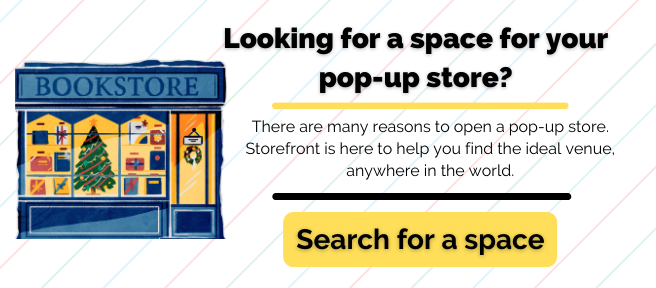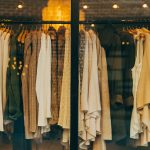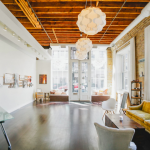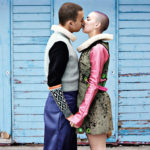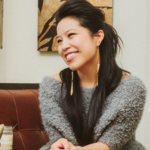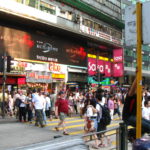The pop-up store phenomenon has helped to rejuvenate high streets and shopping malls around the world. This is good news for the fashion industry, who need physical outlets so that customers can feel the texture and see the of colors in garments for themselves, rather than through a computer screen. The fashion industry has embraced pop-up stores to restore a sense of excitement and interaction into the shopping experience.
The fashion industry is increasingly using pop-up stores to make the retail experience more convenient and immersive. This has made the relationship between customer and brand a more meaningful one. By creating a sense of excitement and ease about the shopping experience that permanent and online stores cannot rival, the fashion industry has learned how to launch the perfect pop-up stores.
Here is how the fashion industry has learned how to make the most of pop-up stores.
The use of pop-up stores in department stores has proved to be a great draw for customers, as the iconic Selfridges department store in London has discovered.
The Corner Shop area in the store has been used as a constant pop-up space, normally for multiple brands to use at once, creating a diverse and intriguing shopping experience drawing in people who wouldn’t normally visit Selfridges. However the recent Fendi pop-up was different because it was the first brand allowed to have exclusive use of the space, helping to create a buzz about Selfridges and Fendi that increased store visitors dramatically.
The store paid homage to the city of Rome by having various kiosks that represented a different part of the city, giving it a unique atmosphere and layout. The store offered unique experiences as well, such as the chance to sample Italian ice cream and send exclusive Fendi postcards home, with a calligrapher in store to customize them. However the most exciting part of the pop-up was the opportunity for customers to be the first to get their hands on the Fall/Winter collection featuring the new Fendi/Fila logo.
By popping up, Fendi was able to generate even more excitement than usual over their new collection. Their partnership with Selfridges gave them a prime location in London with great footfall, but equally benefited the department store by drawing Fendi enthusiasts through their doors. Selfridge’s exclusive pop-up space is a prime example of how the fashion industry is truly embracing pop-up stores and creating mutually beneficial agreements between different brands.
- Embracing Omnichannel
For too long, many retailers did not combine or complement the offerings of their online and physical presences. However, pop-up stores are now being used as part of a wider omnichannel strategy by the fashion industry.
For example, Rihanna is using pop-up stores as part of her strategy for launching her Savage x Fenty Fall collection. It was announced that as soon as the collection had hit the catwalk at New York Fashion Week, it would instantly be available online. A pop-up shop was also open in New York to sell the collection, followed by further pop-up shops in other American cities as the collection was rolled out in the Fall.
While the fashion industry has struggled for a long time to successfully transition looks from the catwalk to stores, pop-up shops have helped to ease this transition. By launching a pop-up store, fans of Savage x Fenty could instantly access the range online, but also go to a pop-up shop to check it out without having to wait for the line to be rolled out across general retailers. Using pop-up shops as part of a broader strategy involving product launches and online stores has helped the fashion industry get back on its feet again.
People like to be able to own something one of a kind, but this can be hard in the world of fashion where items are often mass produced and designed to follow seasonal trends. Many fashion brands have added the ability to customize products as part of their pop-up store experience, which incentivizes people to come to the pop-up and make a purchase, knowing it will be unique to them.
When footwear brand Arche wanted to launch their New York pop-up, they knew that giving customers the chance to customize products would be a huge draw. They offered two iconic designs, the Lilou ankle boot and Laius ballet flat, as products to be personalized, knowing that customers were familiar with these products. However the chance to create their own, one of a kind version of these shoes was an opportunity guaranteed to generate sales.
Special extras like personalization are a great way to attract people to pop-up stores. This puts the power with the customer, and allows them to feel that the brand cares about their opinions, improving their relationship with the brand. The fashion industry has made the most of experiences like these to make sure people come to their temporary stores, rather than just shopping online.
One of the most restrictive things about a permanent retail store is that it needs to be furnished to suit all seasons, products and and ranges all years round. Pop-up shops have the advantage of being able to be designed to push a certain concept or aesthetic that makes them more appealing and exciting for customers.
Fashion pioneer Vivienne Westwood has always been a maverick, so when launching her new Fall/Winter collection her pop-up shop needed to reflect her radical opinions, as well as her radical clothing. As the collection was heavily influenced by military garments, the store was designed like an army base filled with statements about climate change, taking on big corporations who do not offer sustainable solutions.
Whereas a normal retail store usually reflects a more general retail theme, a pop-up shop offers the perfect alternative to help sell a concept or the new identity of a collection. Vivienne Westwood’s pop-up shop is just one example of how creating a unique store can help sell a brand and offer a more interesting experience for the customer.
By focusing on what permanent retail stores and online stores cannot offer, the fashion industry has learned to make the most of pop-up stores as part of their retail strategy. Pop-up shops work best when they help offer the customer a unique experience, sell the brand identity and help bridge the gap between online and brick and mortar stores. So long as the fashion industry continues to use pop-up shops to innovate, the industry will continue to thrive.
- 3 Communication Tips to Steal from Brands Who Launched a Pop-Up Store - October 4, 2018
- 4 Brands Who Launched a Christmas Pop-Up Store - September 25, 2018
- 5 Brands Cashing in on Halloween Pop-Up Stores - September 11, 2018

